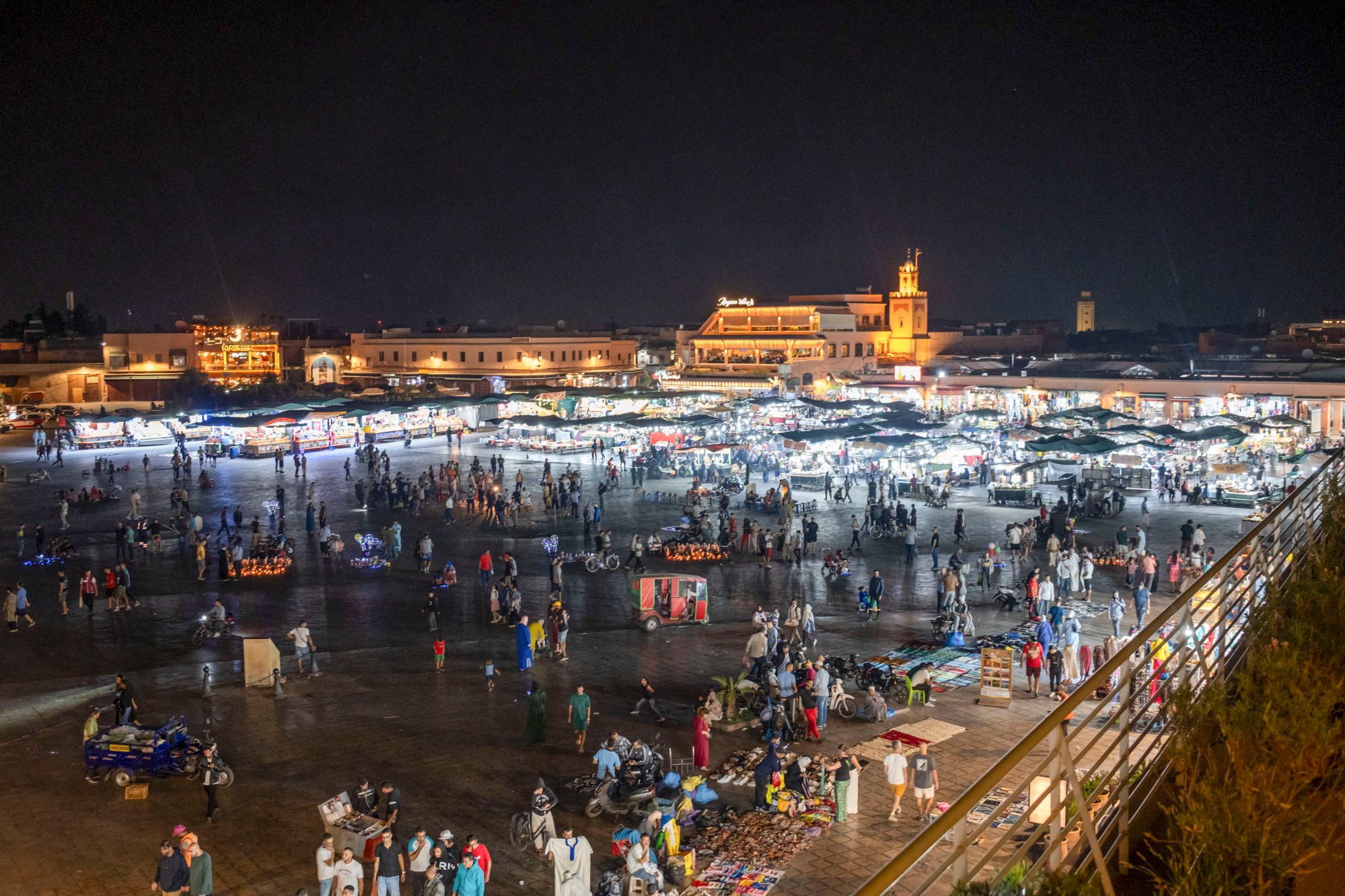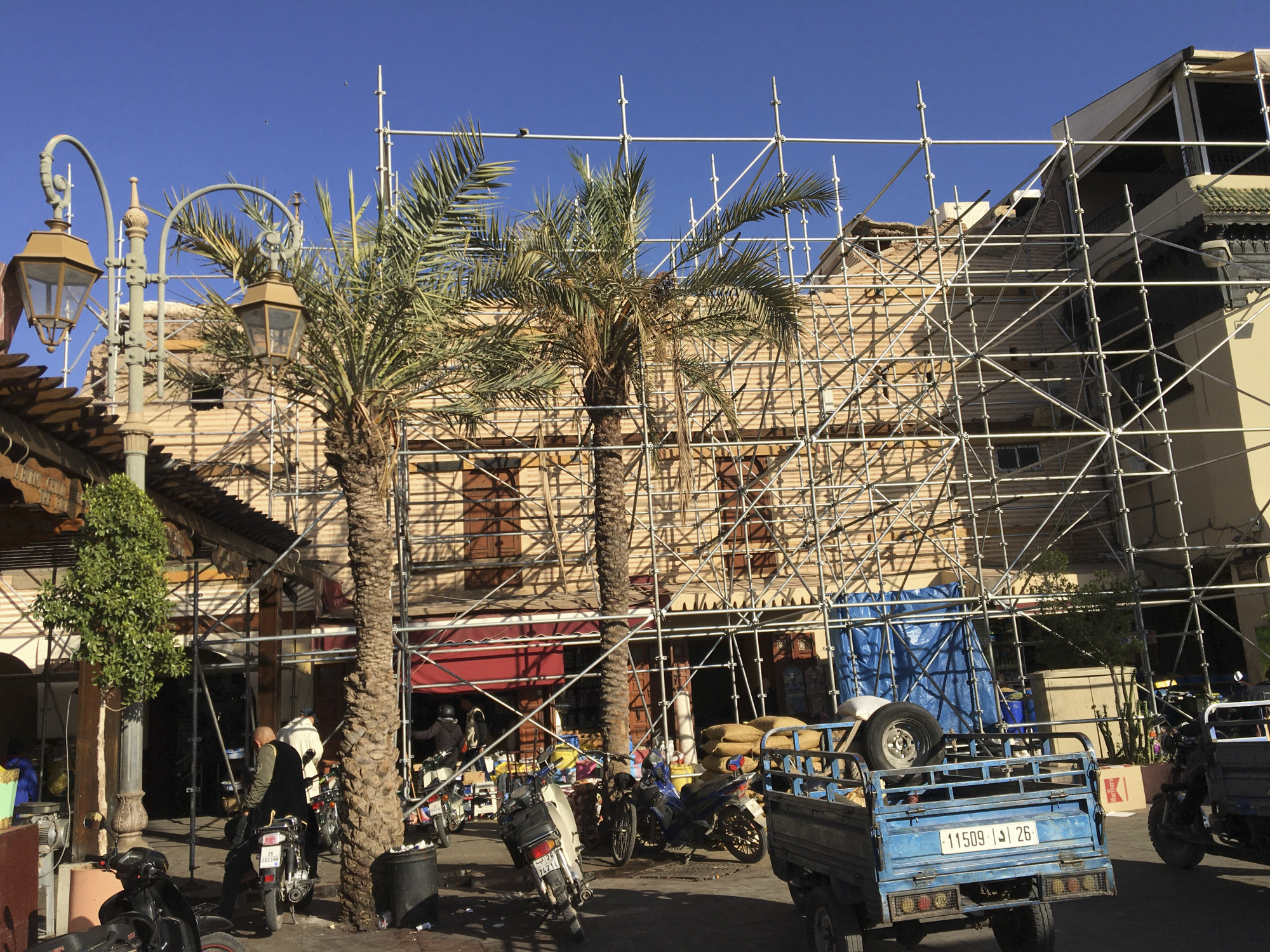
Today, though, as a frequent visitor here, I can hardly see any quake damage.
Marrakech is Morocco’s most important tourist destination and the government has gone to remarkable lengths to show the world that the city is back to normal, says Englishman James Wix.

“The initial clean-up here was nothing less than incredible,” says Wix, who has been living in the city for 13 years and is the owner of Le Farnatchi, a boutique hotel in the heart of the medina.
“Three days after the earthquake, the city looked just as before, and we honestly could not believe our own eyes.”
He adds: “The walls of our hotel are 400 years old and serious structural damage meant we had to close for two months, at the busiest time of the year.”

“We were worried that building materials would soon run out, but Morocco has proved it is an advanced nation ready to cope with this kind of crisis, as fresh supplies for reconstruction – everything from steel girders to bags of cement – were available immediately and have never been in short supply.
“We decided you have to make the best of a bad situation of the forced closure to redecorate parts of the hotel, modernise some rooms, and have been inundated with messages and offers of aid from loyal guests around the world.”
The city’s ultimate luxury address, the Royal Mansour hotel, had followed every anti-seismic regulation and did not suffer structurally during the earthquake. But its French director, Jean-Claude Messant, recounts what was still a traumatic experience.

“To begin with, it took us almost three days to contact all our 650 staff, with no phone or internet. We had to deal with guests already in the hotel – getting them safely home – and then I had to find temporary lodgings for 150 employees who could not safely return to their homes.
“We began a programme to send aid to the mountains, concentrating on a specific area around 50km (30 miles) from the Royal Mansour, sending a medical team, hundreds of tents, clothes and toys for children.
“And then I set up a 24-hour bakery team, who made 10,000 loaves a day, which we shipped up to the villages.”


“Since the Covid pandemic, the restart of the travel industry after a disaster is much faster than before. People just want to get back to normal as quickly as possible, so our service industry swiftly picks up again,” Messant says.
The heart and soul of Marrakech’s mazelike medina are the thousands of weavers, shoemakers, leather tanners, wool dyers, metal workers, carpenters and painters who produce items to sell in cramped workshops-cum-stores.
Their centuries-old crafts still flourish, essentially because of tourist shoppers, so any dip in the number of visitors affects livelihoods. But three months to the day after the earthquake, the narrow alleyways of the souks are packed with foreign visitors spending their dirhams.

Designer Abdul Latif Enosse sits in his hole-in-the-wall Caftan Soltana boutique tempting shoppers with jackets and coats he creates from recycled retro textiles, fabrics and carpets from across Morocco.
He works with wool and silk weavers in remote Atlas Mountains villages that were seriously damaged by the quake and tells me that, “obviously for the moment that supply of unique one-off pieces has disappeared and our stocks here in Marrakech are running low”.
“But we can live with the temporary loss as I am sure that production should begin again in 2024 – and the demand for our work has certainly not diminished.”
‘Supporting the Moroccans’: tourists staying in quake-damaged Marrakech
‘Supporting the Moroccans’: tourists staying in quake-damaged Marrakech
I spend a morning wandering through the medina with tourist guide Younes Ajana, who recounts how, “The day after the quake, all tours were cancelled, so with a group of friends, we jumped in the car and went straight up to the villages in the mountains.
“Since then, our WhatsApp crowdfunding group has raised €43,000 [US$46,370] to provide everything from tents and blankets to medical supplies.
“I did not take tourists out again for the next three or four weeks, and although today I am going out less often than usual, we are all optimistic for the new year.”
The cost of building works was enormous for us and we had to raid our savings and ask friends for loans
Although the medina looks much as it always has, start wandering the quieter backstreets and you’ll find visibly damaged and destroyed houses, some being rebuilt.
Outside one heap of rubble, Ajana bumps into Khalid Bousfiha, a craftsman who began cutting mosaics at the age of 10.
A ruined building is all that remains of Khalid’s atelier, but a neighbouring shopkeeper has given him a tiny corner of his own boutique in which to set up a makeshift workplace. Demand from tourists and locals for his skills is strong, says Bousfiha.
In El Moukef, one of the oldest, off-the-radar corners of the medina, stands Riad Dar Kleta, a 300-year-old building lovingly restored by French couple Julien and Françoise Gaumont into a romantic hideaway.

Julien says the rooftop room I stayed in last year all but collapsed during the quake, with debris crashing down into their lush garden and green-tiled plunge pool.
“The cost of building works was enormous for us,” he explains, “and we had to raid our savings and ask friends for loans.”
But now, the riad is about to reopen and looks just as before. He says, with a sigh of relief: “We have just made our application for government funding, which promises to reimburse all the work, and most importantly, we are already getting lots of new bookings.”

Anecdotal evidence suggests Marrakech emerged from the Covid-19 pandemic as a more welcoming and seductive destination, and all signs point to a similar renaissance after the tremors of Morocco’s largest recorded earthquake.

